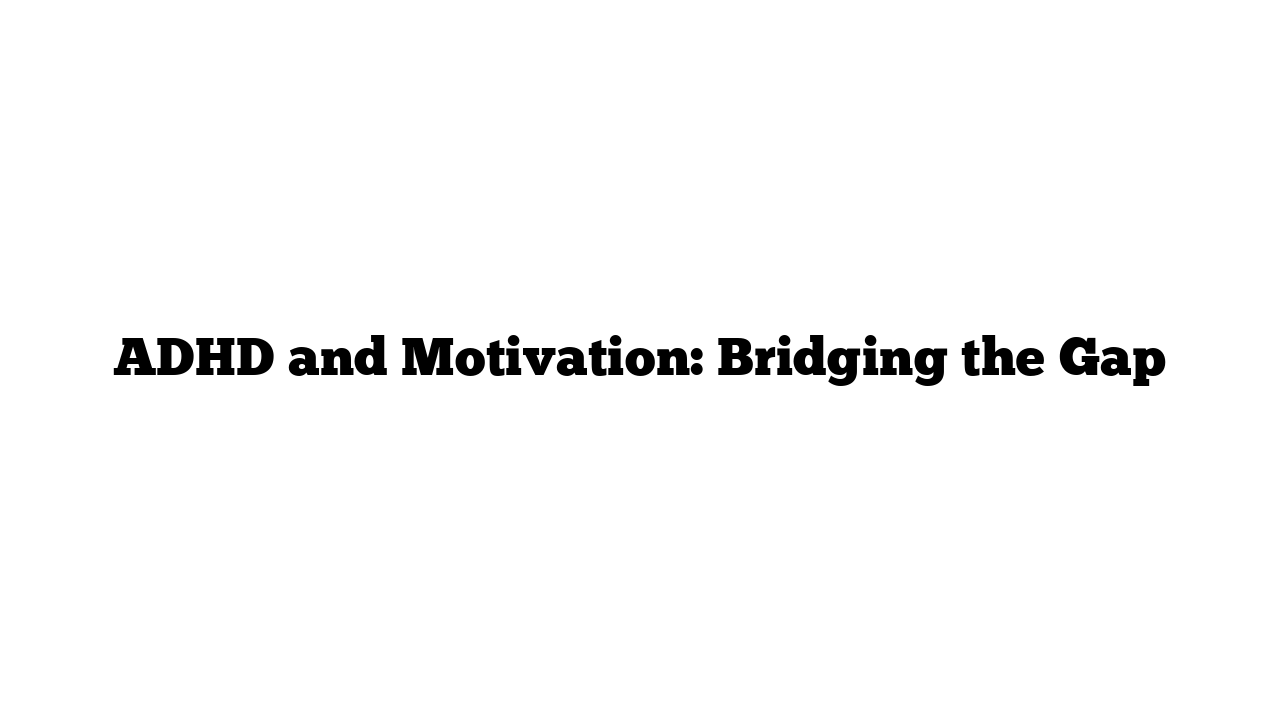Remember that thing I promised to do? Yeah… about that. We often struggle to follow through on our intentions. Why? Because there’s a significant gap between wanting to do something and actually doing it. Let’s call this gap the Motivation Bridge.
This bridge is built with motivational planks, such as:
- “This will benefit my career.”
- “It will make my family proud.”
- “I committed to it publicly.”
While this bridge isn’t always perfect, small gaps in motivation can usually be crossed with willpower and self-discipline. Even if I don’t feel like doing something, if it’s essential to me, I can push through.
The Challenge of ADHD
However, for those of us with ADHD, it can feel like we have a motivation deficit disorder, as Dr. Russell Barkley describes. Something might be just as important to us as it is to someone without ADHD, but that importance often doesn’t provide us with enough motivational planks. Instead of just small gaps, it feels like half the bridge is missing.
This can be confusing and frustrating for both us and those who don’t understand why we can’t just cross the bridge. They may overcome their gaps easily, leading to misconceptions about laziness or lack of care on our part.
Understanding the Problem
It can also be baffling for us, especially when it’s a task we’ve successfully completed before. We might think, “Why can’t I do it now?” The reality is, the times we manage to complete tasks are when we have more motivational planks in place.
How to Fix Motivation Bridge
If you’re struggling to get something done or want to support someone with ADHD, consider these strategies to strengthen the Motivation Bridge:
- Make it Urgent
Creating a sense of urgency can significantly boost motivation. Procrastination often kicks in and suddenly provides the push we need, but it’s not the healthiest approach. Instead, consider:- Accountability: Share deadlines with someone else. Ask your teacher for draft deadlines, or meet a coworker regularly to check in on progress.
- Timers: Set a timer to see how much you can accomplish before it goes off.
- Make it New or Novel
Routine can dull motivation, but we can introduce novelty:- Change your environment—try studying in a hammock or in a new café.
- Gamify tasks or approach them in unexpected ways, like learning while upside down!
- Make it Personally Interesting
ADHD brains thrive on interest-based learning. It’s easier to engage with a task that excites us. Here’s how to harness that:- Try to connect tasks to your interests or find personal significance in them. For instance, create content about topics you’re struggling with, making the task more relatable.
- If you have to do something boring, find a way to make it interesting, or reward yourself with immediate feedback. Short-term rewards, like sticker charts or verbal recognition, can be more motivating since ADHD brains often struggle with long-term rewards.
Filling in the Gaps
All these strategies—creating urgency, introducing novelty, and making tasks personally engaging—can help add planks to our Motivation Bridge.
Do we need all the planks in place before we start? No! We can jump over smaller gaps, which helps us grow stronger. But if your bridge looks significantly compromised, don’t waste energy trying to jump that gap or chiding yourself about its importance. Instead, get curious about what’s missing and focus on filling those gaps.
